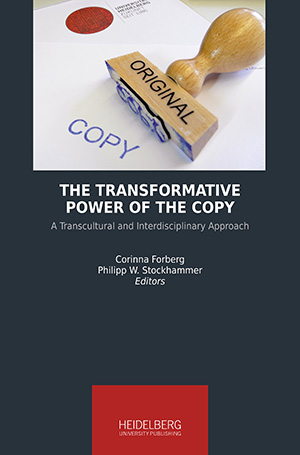Zitationsvorschlag
Lizenz (Kapitel)

Dieses Werk steht unter der Lizenz Creative Commons Namensnennung - Weitergabe unter gleichen Bedingungen 4.0 International.
Identifier (Buch)
Veröffentlicht
Image Enhancement through Copying? Global and Local Strategies of Reproduction in the Field of World Art and Heritage
Abstract The digital and global cultural turn has created the effect that culture- and media-related strategies and practices of copying, as they have evolved and been conventionalized in the age of modernity, are subject to major transformations. Global cultures are often identified as “cultures of copy” which show a pronounced disinterest, even disregard in the modern idea of the sovereign, untouchable, and unreproducible original. This essay paper focuses on new global and local strategies of reproduction in the field of world art and heritage. It studies how the relationships of particular cultures (here Western, Asian, and Arabic) towards the concepts of original and copy, and creation and reproduction, are displaced, renegotiated, or even reaffirmed in the digital age of “copy and paste,” given that the means of digital reconstruction allow for unlimited remake. The issue of image empowerment through copying of world art heritage is discussed on the basis of a) the replication and virtual reconstruction of the Buddha statues of Bamiyan, and b) “remakes” of the Parisian Louvre in Lens (Northern France) and Abu Dhabi. Using an individual art work and an art institution as objects of inquiry, the innovation potentials and iconoclastic conflict zones of the new “glocal” power of the copy are scrutinized. As a result of this case-based analysis, this study argues that, due to the pressure of the global cultural economy, copycatting has become a new cultural-economic and political strategy for image empowerment in the field of world art and heritage. Analogous to remediation processes in digital cultures, local and global copycats of world art heritage are empowered to remaster the original image. Innovative imitation is found to be a guiding principle for globalizing the heritage market. Given that copy(cat) ing implies geopolitical relocation, the transformative power of the copy is interpreted as a newly politicized right and cultural power to copy.
Keywords Cultures of copy, iconoclasm, world cultural heritage, Bamiyan Buddhas, Louvre






